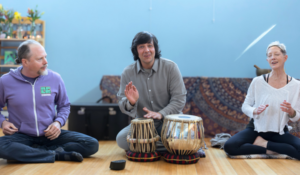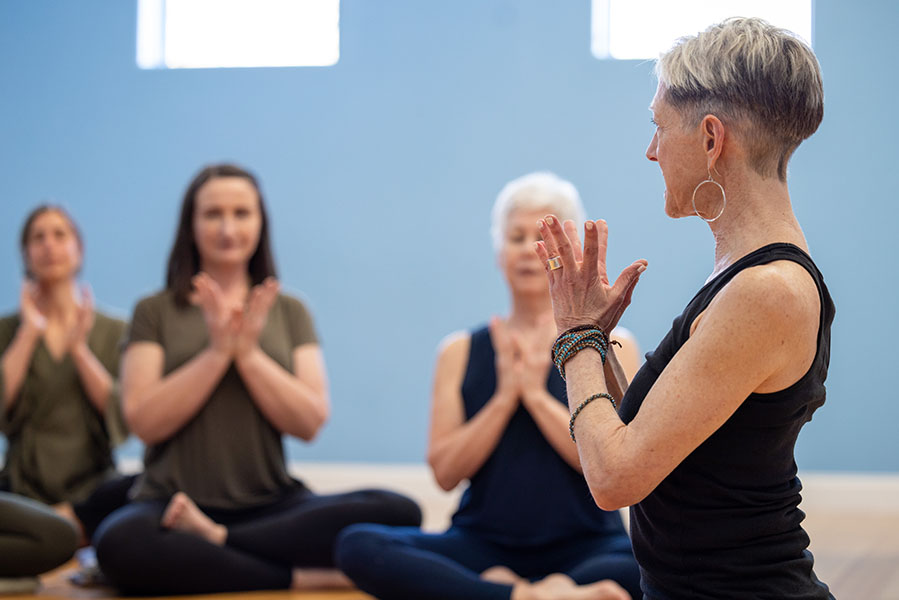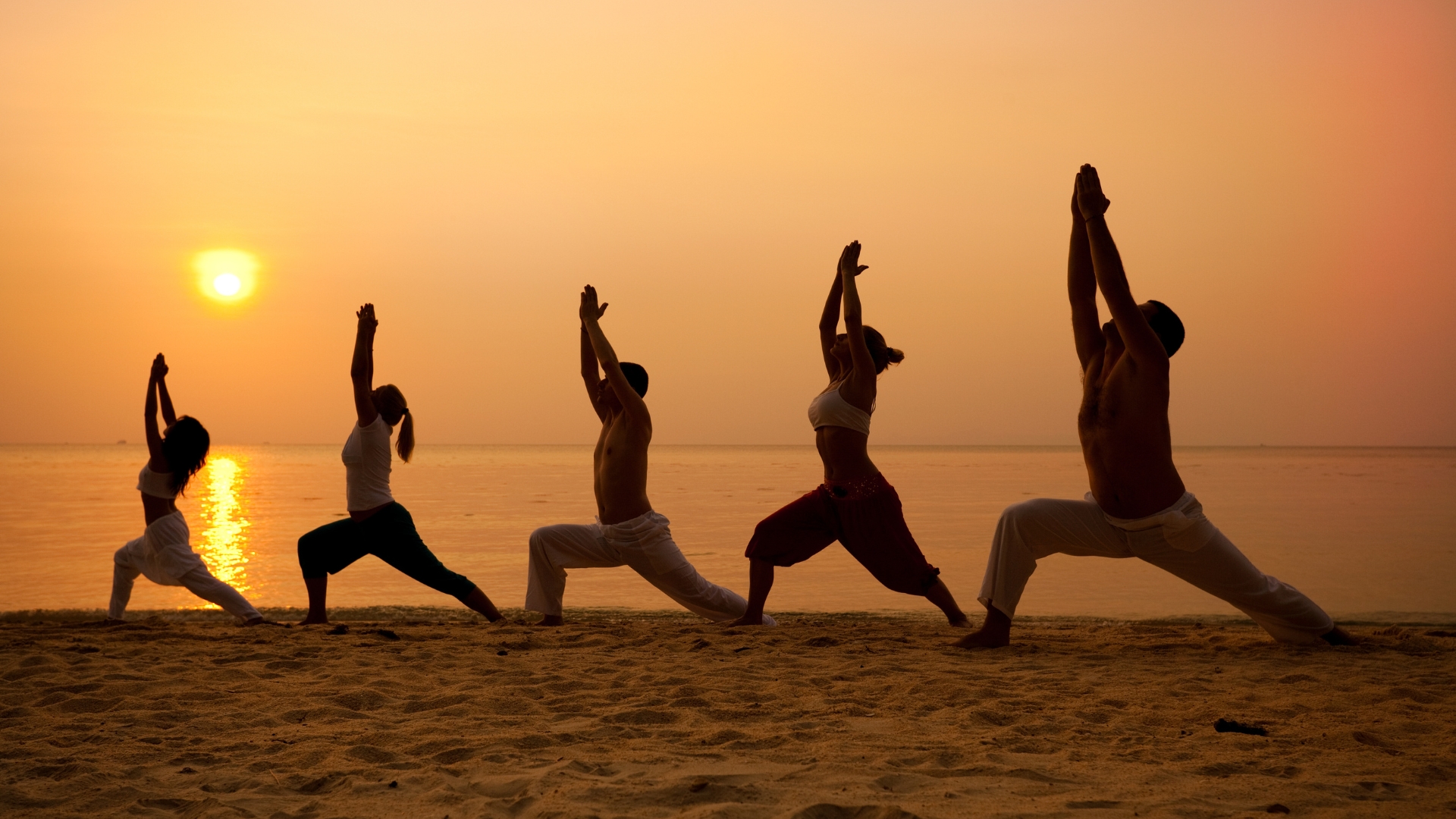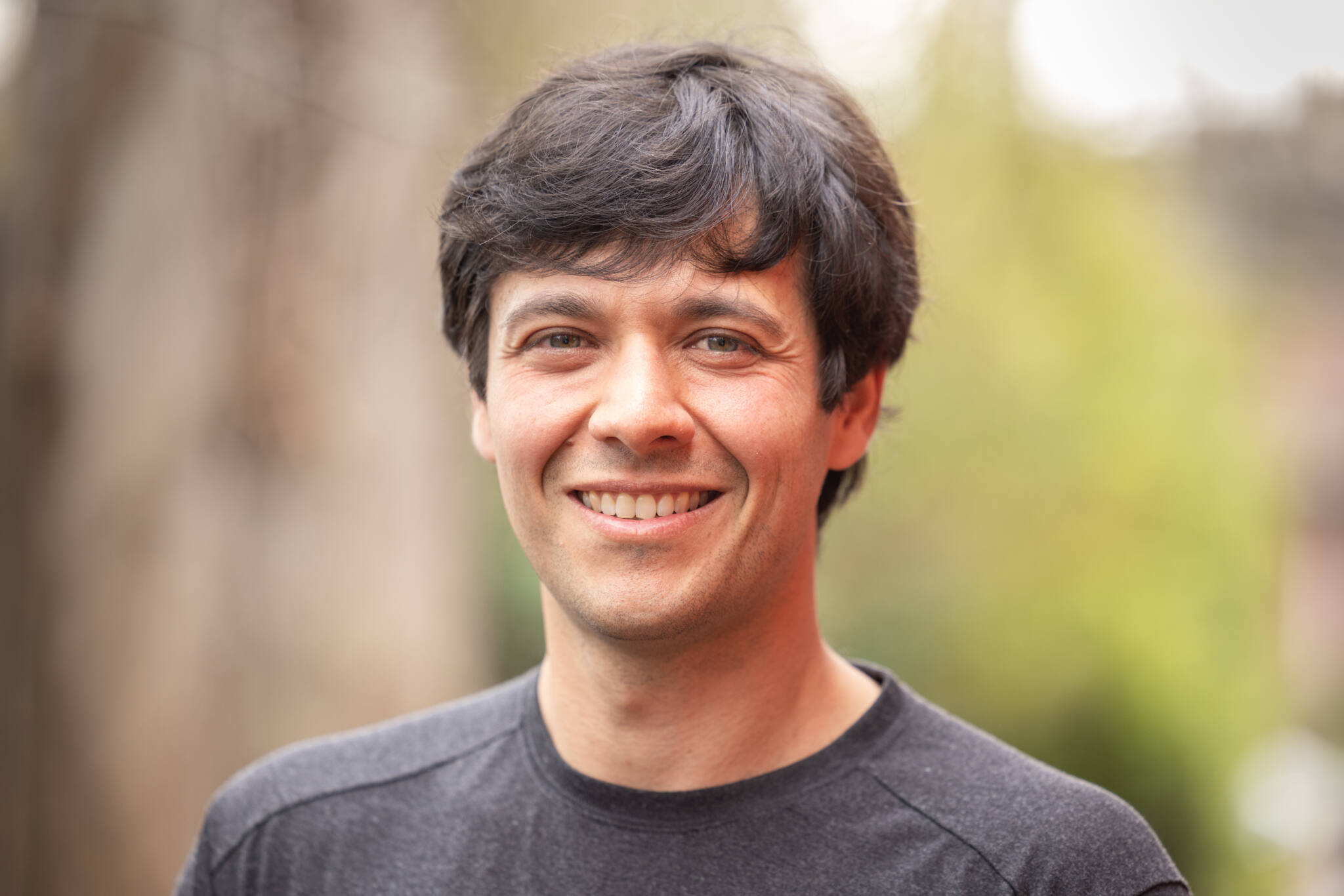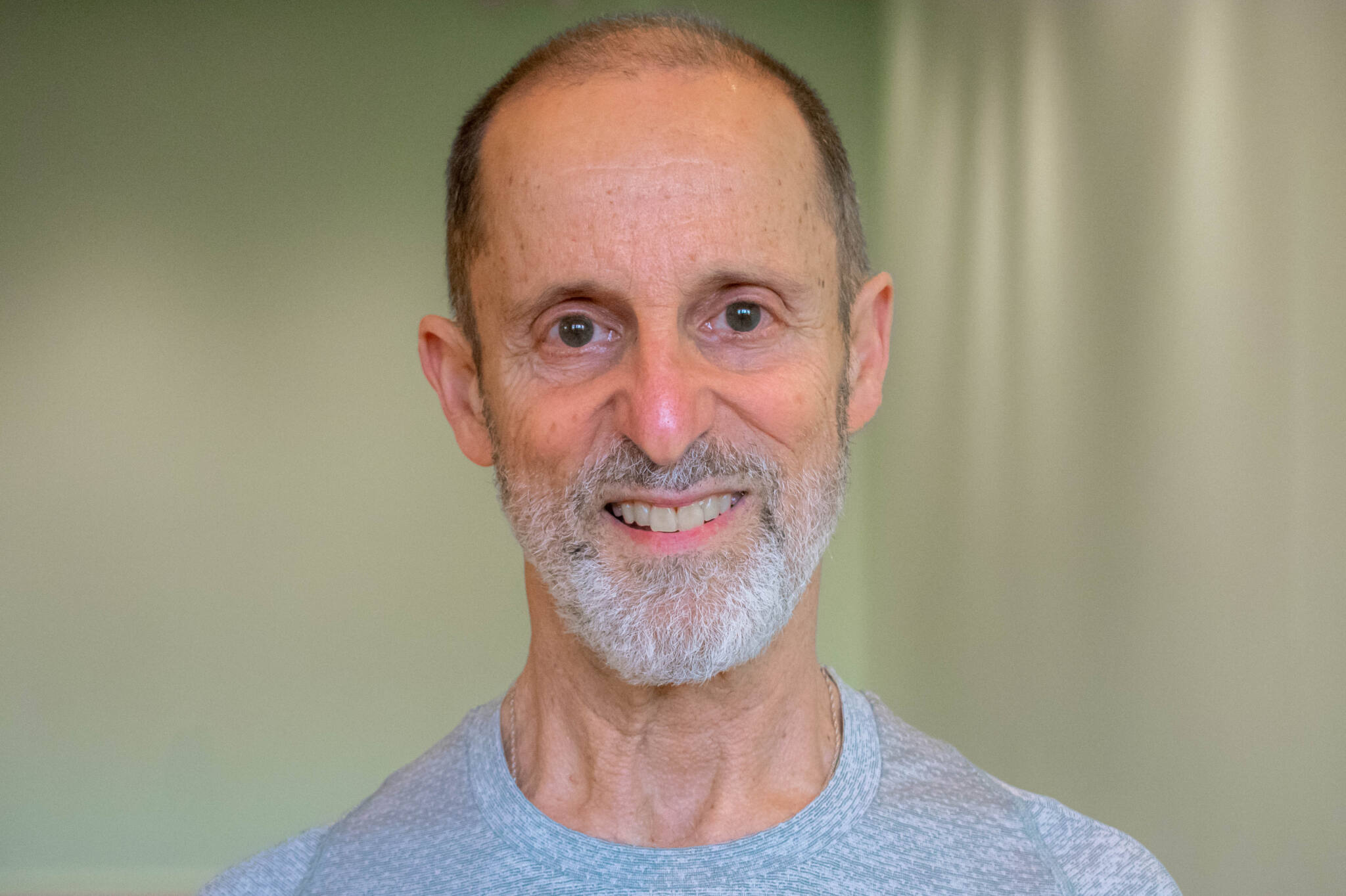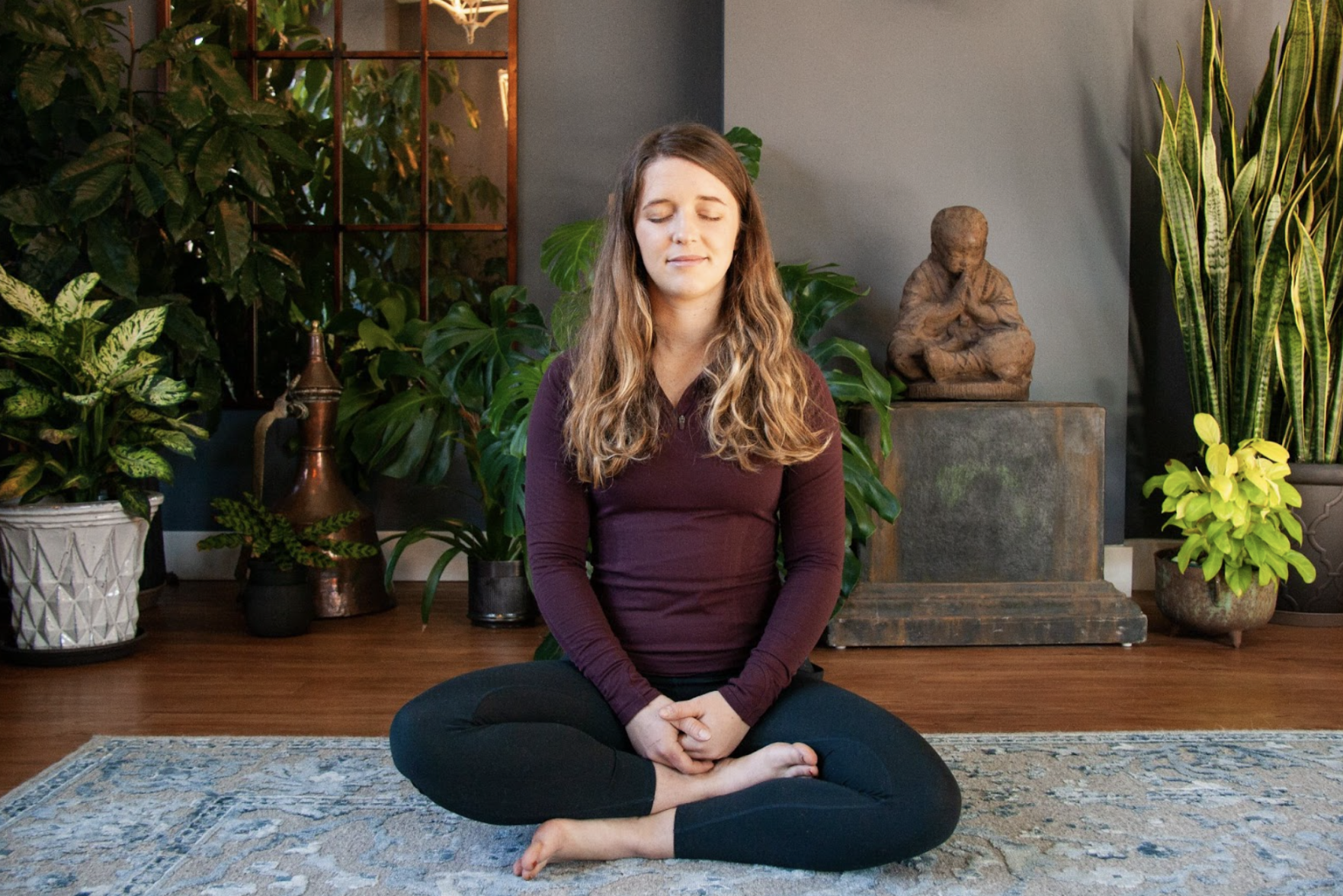
Sleepless nights with my newborn first introduced me to Yoga Nidra in 2014. At first, it was simply a lifeline—a way to rest when real sleep wasn’t possible. Over the years, though, the practice became something much deeper. It helped me recover from burnout, supported me through stubborn health challenges, and eventually opened the door to a deep sense of peace I hadn’t known before. What began as a way to recharge became a pathway into something far greater: union with Universal Consciousness.
So, what exactly is Yoga Nidra? Often called “yogic sleep,” it’s a meditative practice where the body rests deeply, the thinking mind quiets, and pure awareness (sakshi) remains. It offers profound relaxation, emotional release, and mental clarity—and, at its highest expression, a direct experience of the Self beyond all states of consciousness.

The Roots of Yoga Nidra
Upanishadic Foundations
The Mandukya Upanishad describes four states of consciousness:
- Jagrat – waking state
- Swapna – dreaming state
- Sushupti – dreamless deep sleep
- Turiya – the transcendental awareness underlying and beyond all three
Yoga Nidra guides the practitioner through these layers, moving beyond waking, dreaming, and deep sleep toward turiya—resting in the truest Self, free from thought, story, or ego. In this sense, Yoga Nidra is not just about rest—it is a practice of coming into union with the Supreme Self. This state of mind is beyond worry, beyond time, and beyond the ordinary mind.
When yogis begin this practice, the experience can simply be relaxation and restoration— you simply feel a little better, more relaxed, less stressed. However, some may also have a glimpse of turiya, and with the sustained practice of yoga nidra (often accompanied by a regular meditation practice), that state of boundless awareness can be suspended and maintained for longer periods of time.
Similar to meditation or meditation in action, this is a practice of remembering your essential nature. It’s a practice of coming home to the Supreme Self.
Tantric Foundations
Tantric teachings see Yoga Nidra as more than just rest—it’s both a state of consciousness and a living, dynamic energy. Simple techniques like nyasa (bringing awareness to different parts of the body) and pratyahara (turning the senses inward) help guide the mind and body into this calm, radiant state. Rather than escaping life, Yoga Nidra is a doorway into a deeper, more vibrant inner field, where awareness can shine clearly. Some traditions describe this radiance as the harmonious union of Shiva and Shakti—the masculine and feminine energies of consciousness—working together within you.
These two threads—Vedantic insight into the Self, as shared in the Upanishads, and Tantric embodiment of divine energy—come together in modern Yoga Nidra through the teachings of Swami Rama of the Himalayan tradition and Swami Satyananda Saraswati of the Bihar School of Yoga.
Modern Lineages
Swami Rama and the Himalayan Tradition
Swami Rama introduced Yoga Nidra to the West as a path of superconscious awareness, emphasizing its power to transcend identification with the body and mind and to realize the Supreme Self.
Swami Satyananda Saraswati and the Bihar School of Yoga
Swami Satyananda systematized Yoga Nidra into a structured guided practice, including:
- Rotation of consciousness (body scan)
- Breath awareness
- Visualization
- Sankalpa (heartfelt resolve)
This method has made Yoga Nidra accessible worldwide—for beginners seeking relaxation and for advanced practitioners exploring consciousness.
The Benefits of Yoga Nidra for the Modern Day Yogi
Yoga Nidra for Beginners: Beginners will often utilize yoga nidra for the following:
- Yoga Nidra for Sleep: Relieves insomnia and improves rest
- Yoga Nidra for Stress: Calms the nervous system and lowers cortisol
- Yoga Nidra for Anxiety: Cultivates equanimity and emotional stability
For the dedicated sadhaka:
Yoga Nidra also serves as a deeper practice of tantra and Vedanta. In deep nidra, sankalpa (heartfelt resolve) takes root in the subconscious, transforming life from within. In other words, it becomes a path of dharmic living. In addition, dedicated practitioners can experience turiya—the truest Self beyond waking, dreaming, and deep sleep. As Swami Rama called it, the practice is “a bridge to superconscious awareness.”
An Invitation
Yoga Nidra is for everyone. For householders, it is a tool for rest, stress relief, and balance. For advanced yogis, it is a path to Self Realization.
The practice will meet you where you are, support your wellbeing, and has the potential to enhance your spirituality.
Resources:
- Mandukya Upanishad, with Gaudapada’s Karika commentary
- Swami Rama, Path of Fire and Light, 1986
- Swami Satyananda Saraswati, Yoga Nidra, 1976
Yoga Nidra FAQs
Beginners can start with guided instructions or recordings, especially for relaxation and nervous system calming. For deeper subtle-body or meditative work (beyond relaxation or a body scan) it is important to learn under the guidance of a skilled practitioner—a teacher can help with awareness of prana, energy blocks, and correct mental focus.
Start small—10–20 minutes is enough to begin. You can practice in the morning to set a calm tone for the day, in the evening to unwind, or whenever you need a reset. The key is consistency, not duration: pick a quiet, comfortable space and treat it as a gentle ritual rather than a task.
Yes—especially for beginners or if you’re tired. Falling asleep is normal and still provides benefits for the body and nervous system. Over time, as you develop the practice, you can learn to remain aware while deeply relaxed, which is when the full potential of Yoga Nidra for subtle awareness and self-inquiry emerges.
Even 2–3 sessions per week can make a difference. Daily practice can deepen benefits, but it’s important to honor your energy levels. Yoga Nidra is meant to be restorative, not stressful.
No. Yoga Nidra is accessible to beginners and supportive for advanced practitioners. If you meditate, you may find it to be a useful tool to prepare the nervous system and mind for meditation, complementing your practice.



